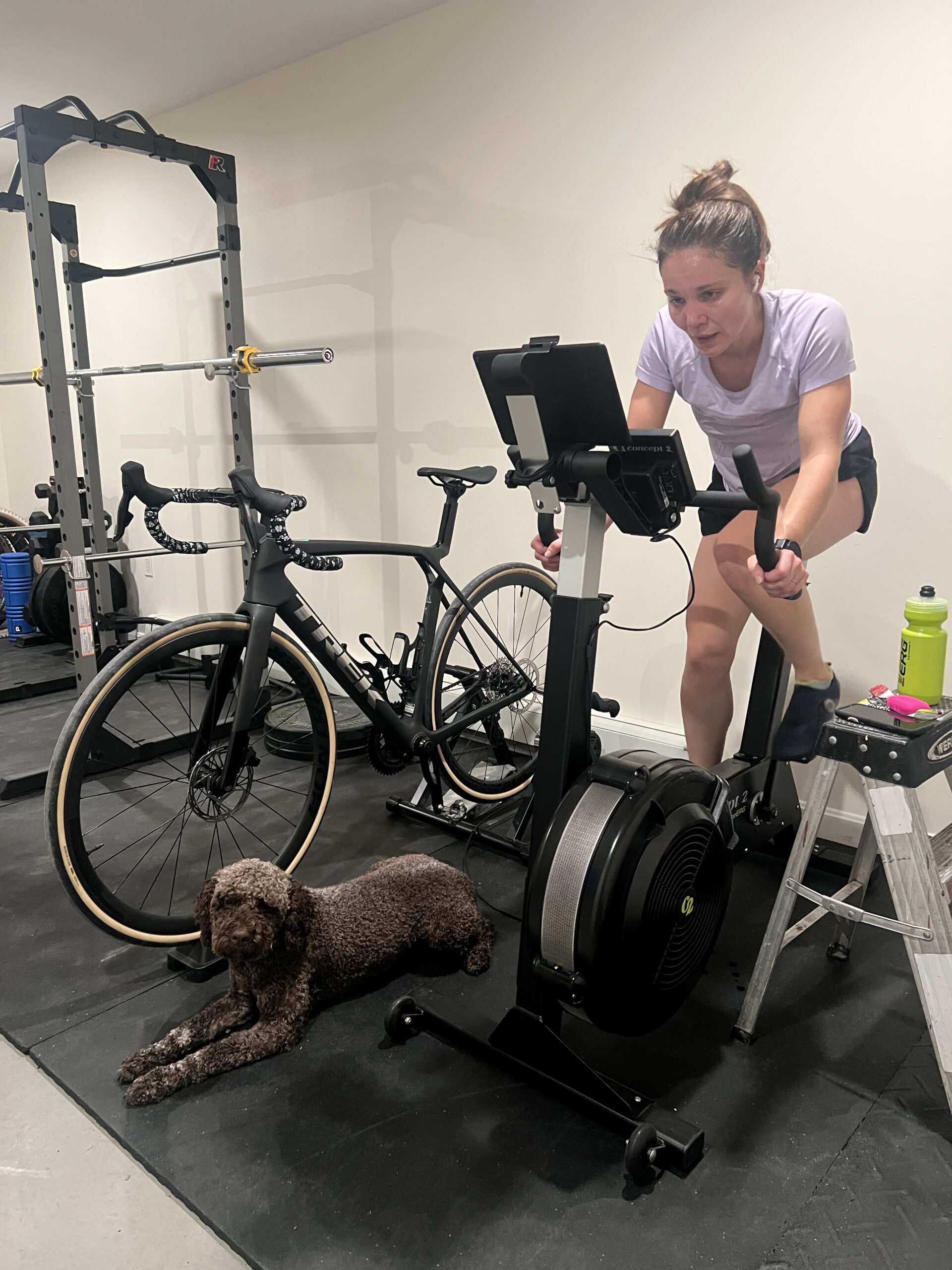When I started to consider cycling-specific training, in my mind’s eye, I copied and pasted what I know about endurance running onto an indoor trainer. My assumption was I’d ride 5 times a week, building up my time on the bike with one long ride on the weekend. Once I was three weeks in, I’d introduce sprint work and “tempo” rides at a harder pace, then slowly work up the time at effort within those rides. Eventually, this would translate to being able to ride for a long time at higher efforts.
I also thought that I should start building lower body strength as soon as possible, because I’d need that to improve my power output. This translated to some random squats, deadlifts, walking lunges, etc. Focusing on those big muscle group movements seemed like the right call.
Here’s the thing: I was wrong about both assumptions above.
While the theory of each is logical, there is much more nuance to sustained, planned bicycle training over a long period of time than I first thought. A distinguishing factor between training to run and ride is that there is more technology and data available to us on a bicycle than there is when running. Smart trainers and power meters on bicycles gather data that can be monitored over time to measure the results of training. Software applications can layer this data with heart rate monitors and AI now creates training plans for us. With access to all this support as a recreational athlete, we have a greater ability to create a smart plan that can better direct our work ethic into results.
And as for strength training, an athlete needs to build foundational muscular endurance and correct form before blasting their body with random heavy lifting. Runners stereotypically don’t build strength training into their routine, and I embody that problem. To overcome this pattern, I need a strength plan built by a professional and I’m fortunate enough to have access to one.
When I started my initial training in mid October, this is what my schedule looked like. At the time I was also training for Concept2’s SkiErg World Sprints Challenge by following this training plan.
| Mon | Tue | Wed | Thu | Fri | Sat | Sun |
| Rest | BikeErg: 1.00 hr Zone 3 | Rest | SkiErg Sprint: 0.75 hr | SkiErg Sprint: 0.75 hr | Rest | Run: 1.00 hr |
| SkiErg Sprint: 0.50 hr Strength: 0.50 hr | BikeErg: 0.50 hr Zone 3-4 | Rest | Strength: 0.50 hr SkiErg Sprint: 0.50 hr | Rest | Run: 1.75 hr | BikeErg: 2.00 hr Zone 2 |
| Strength: 0.75 hr SkiErg Sprint: 0.50 hr | Rest | Strength: 0.75 hr SkiErg Sprint: 0.50 hr | BikeErg: 2.00 hr Zone 2 | Rest | Strength: 0.75 hr BikeErg: 0.25 hr | Rest |
After setting up my TrainerRoad (“TR”) and strength training plan, here is what my first week of focused training looks like:
| Mon | Tue | Wed | Thu | Fri | Sat | Sun |
| Strength: 0.75 hr | TR Ride: 1.00 hr | Rest | Strength: 0.75 hr TR Ride: 1.00 hr | Strength: 0.75 hr | TR Ride: 1.50 hr | TR Ride: 1.00 hr |
These TR rides will be on my BikeErg, but they’re not going to be an hour to two of work with target heart rate zones being my only data point to add structure. Instead, the workouts will rotate between tempo, sprint work, and endurance efforts, with the TR app measuring my ability to hit target power, heart rate, and my subjective experience (“easy” to “very hard”), and then automatically adjusting the next days’ plans up or down based on data.
What a time to be alive!



